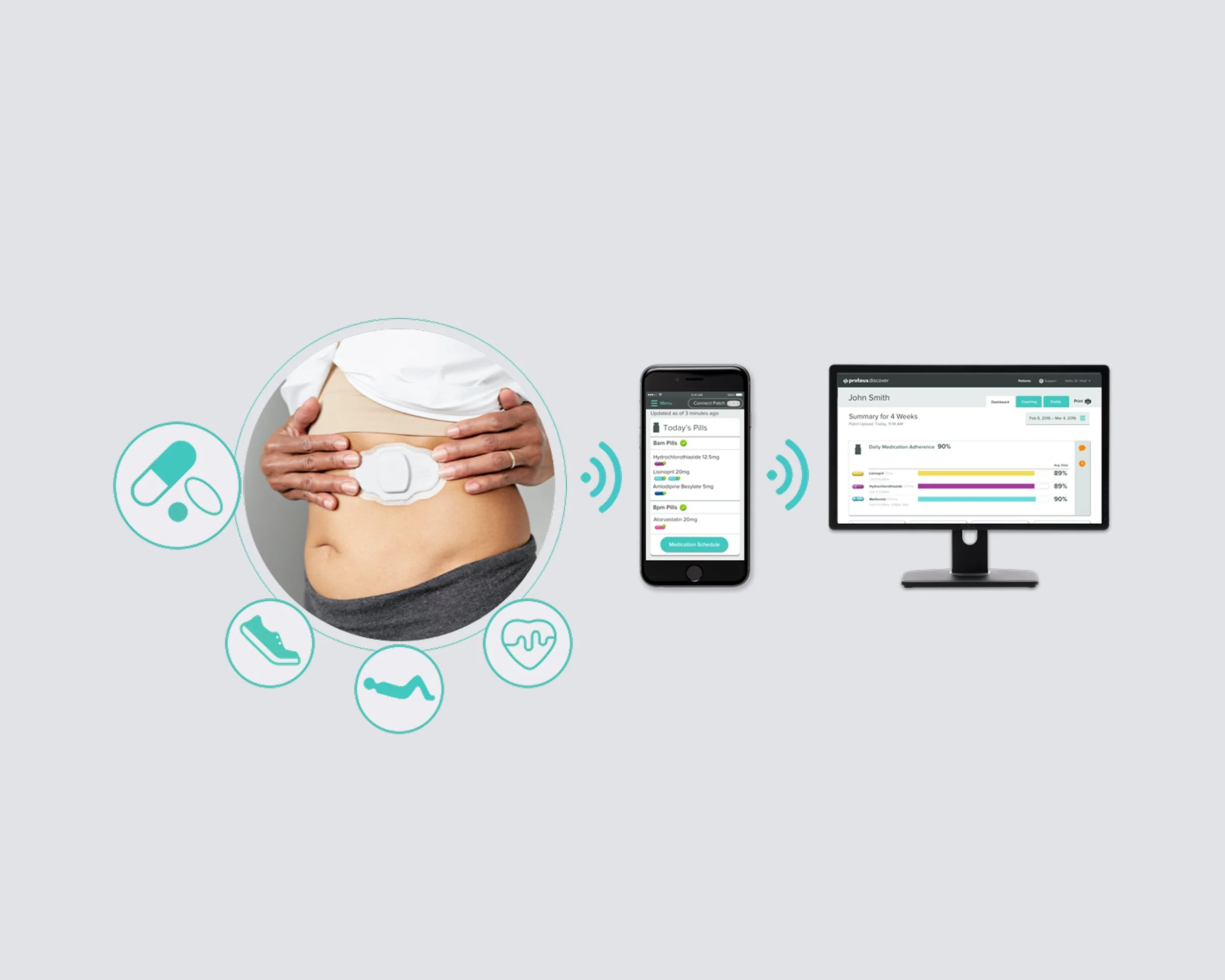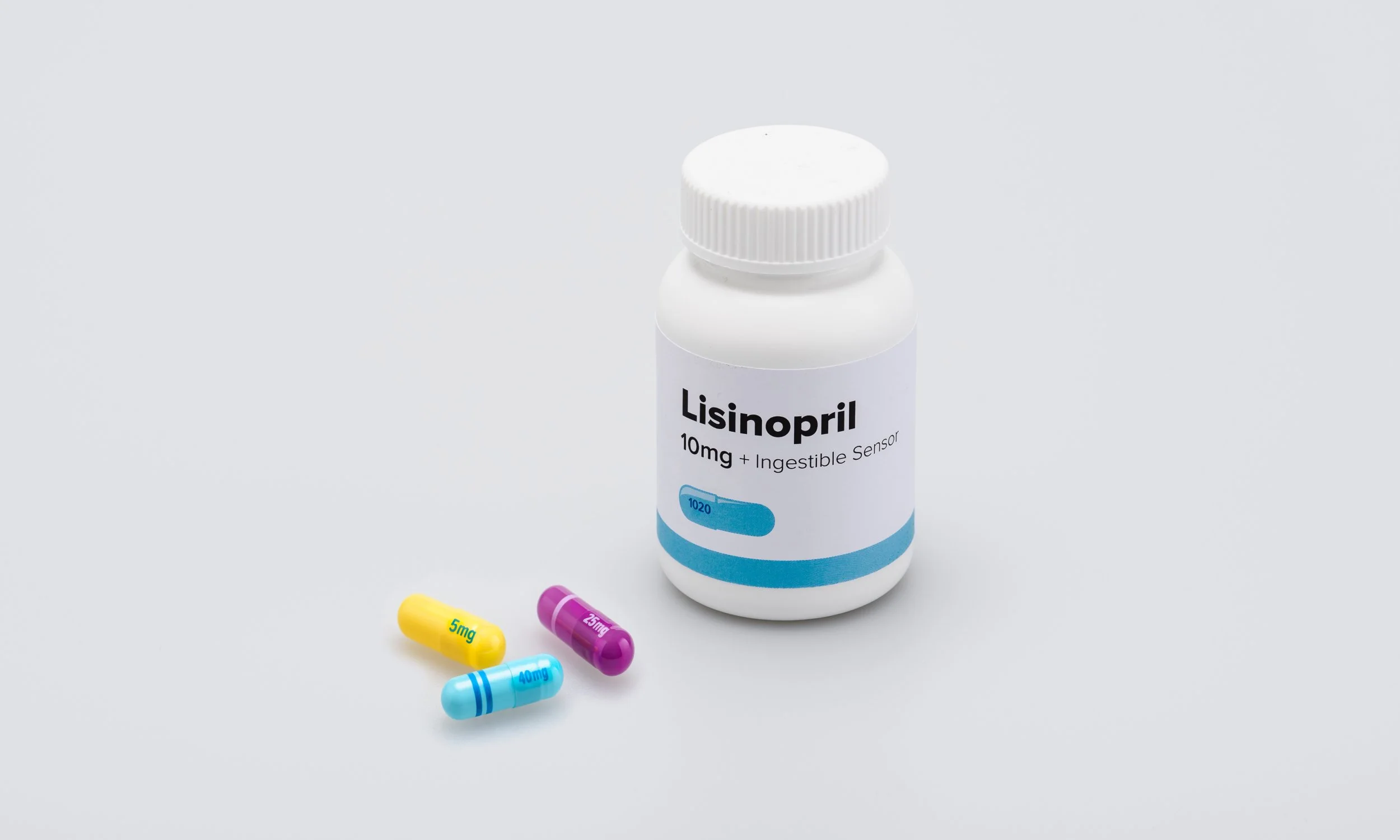Proteus Discover IoT
Commercialising a novel ingestible and wearable sensor platform
Discover is a digital health platform that reveals patterns in patient health and treatment implementation. It combines ingestible sensor–enabled medication, a wearable sensor patch, a user-friendly app, and a clinician portal.
Role
As UX Director, I led the user-experience design for Discover at Proteus Digital Health. Joining early, I helped define a therapy-agnostic platform strategy around core adherence technology, built a multidisciplinary design and research team, matured internal design capability, and led end-to-end platform design.
Deliverables
User research & testing
UI & UX design
Packaging design
Service design
Usability engineering file
Design capability build-out
Outcomes
510(k) and CE medical-device certifications
Delivery contributed to $88M in funding
2 product versions and 9 updates released
Platform expanded to four new use cases
Digitising Medication
for Initial Launch
Patients take a single capsule containing both their prescribed medication and an ingestible sensor. This co-encapsulated approach enables real-time tracking of adherence while avoiding the cost and complexity of integrating sensors during drug manufacturing. The experience ensures that patients receive their treatment in a familiar form, with clear feedback that supports engagement and trust.
Development began with desk research, interviews, and site visits to understand the encapsulation process, manufacturing constraints, and regulatory requirements. A design system was established to support the creation of co-encapsulated medication panels. Packaging and interface concepts were prototyped and tested with patients, and the final solution was delivered in collaboration with manufacturing and supply functions to ensure scalability and compliance.
Improving Acceptance of
Wearable Technology
The reusable wearable patch is a torso-worn sensor that works with ingestible sensors embedded in prescription medication. It includes a reusable pod and disposable adhesive strips. The patch detects when medication is taken and automatically records daily steps and rest periods. Data is sent to a companion app, giving patients and clinicians real-time insight into adherence and activity.
Design efforts focused on improving wearability, usability, and patient acceptance. Key challenges included colour, latch design, packaging, and instructions for use. Iterative user testing informed mechanical and industrial design decisions, drawing on input from engineering and external partners. The result was a reliable, patient-friendly, FDA-approved device ready for real-world deployment.
Developing Autonomous
Patient Onboarding
Patients set up their own accounts, assemble and pair the patch, and create a medication schedule using their personal or provisioned devices. The onboarding experience was designed to be intuitive, reducing the need for in-clinic support and enabling scalable, autonomous use of the Discover platform.
Insights from assisted setup testing were used to identify critical user needs at the outset of development. A new cross-touchpoint experience was prototyped and tested iteratively, focusing on key onboarding tasks. The solution was soft-launched at two partner sites, with improvements made to support and training. The result was a streamlined setup process that enabled independent use, reduced site burden, and supported large-scale deployment.
Increasing Patient
Engagement
Discover helps patients achieve health outcomes by tracking adherence, activity, and sleep. As usage grew, the dataset enabled new patient-facing insights to support engagement and self-management. The first, missed dose feedback, let patients report adherence barriers so providers could adjust treatment when needed.
To support this and future features, factors influencing adherence were mapped into a data-ready framework. Key findings were prioritised with the data science team and developed into activation features laying the foundation for a more adaptive, behaviourally informed product experience.
Integrating Personalised
Treatment Decisions
As product use expanded across new sites and clinical contexts, improving workflow integration became essential. Efforts focused on reducing friction in key processes such as prescribing, patient setup, and data review. This maximised clinical value while minimising additional burden on healthcare professionals.
To address increasing variability in healthcare delivery and system integration, service workflows were mapped across all active sites. Common patterns were identified and consolidated into a simplified service model. This standardised approach enabled better internal coordination, reduced complexity in product releases, and supported scalable service automation. The result was clearer communication between teams and more consistent implementation across care settings.
Project Data
User need
Medication adherence averages less than 50% for long-term conditions such as hypertension and diabetes, driving avoidable complications and disease progression.
Context
Clinicians have limited visibility of patient behaviour between visits and few tools to diagnose and address the root causes of poor treatment implementation.
Value proposition & business case
The Discover platform enables patients to monitor and improve treatment implementation with minimal effort, while structuring an effective partnership between patient and clinician. Improved adherence leads to better outcomes and lower long-term healthcare costs.
Technologies
Ingestible sensors; wearable sensors; smartphone applications; web applications; behavioural science; medication-adherence interventions; integration with 22 pharmaceutical products.











